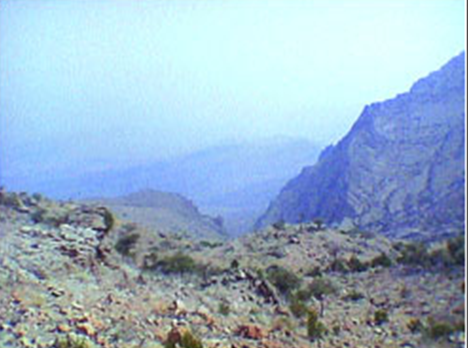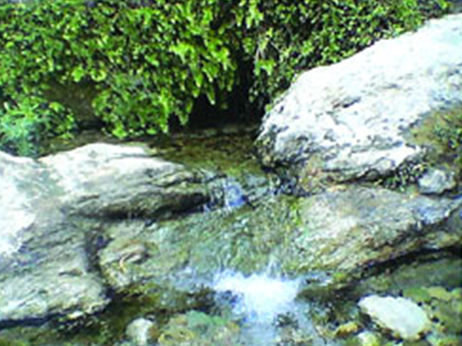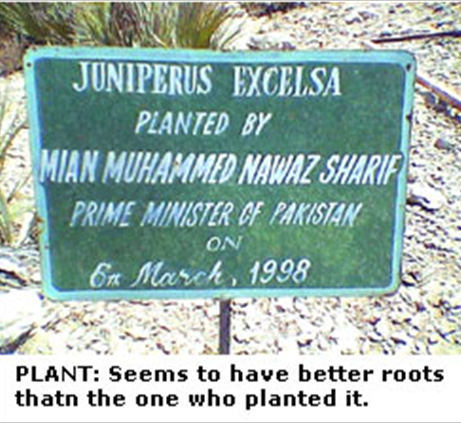Gorakh
This is a collection of articles archived for the excellence of their content. Readers will be able to edit existing articles and post new articles directly |
Gorakh
A sight to be hold
I couldn't believe my eyes as I read in the Magazine (November 26) that someone went to the Gorakh hilltop in a jeep driving on a metalled road.
In 1985 when I went to Gorakh for the first time there was no road. One had to trek 40 miles all the way up on a stony uneven track that often lost its way in the rocks. It was extremely tough. I and the four others with me didn’t have a morsel of food for almost 30 hours!
Although we had the dry rations, there were no cooking utensils as we thought they would be an extra weight to carry. We were told that every two miles or so we would come across a shepherd’s hut from which we could borrow some cooking utensils. But we had lost our way and were on a track that was entirely uninhabited.
When the edge of a plateau came into view we knew that we were close to a human habitation, an impression reinforced by three tiny specks which the guides said were human figures. As we drew close to the crest, we saw the faces of the children who were peeping over the edge of the crest at us. As we climbed the crest, the elders of the hamlet appeared. They offered us food. The place we had reached was called ‘Trai Chooti’ (three summits). After a respite when we had regained our strength, we began walking towards Gorakh, still a few miles away.
The rest of the stay was like a fairy tale. Everywhere people welcomed us. They slaughtered goats in our honour. A reason why I was welcomed was that many of them said that I was first human being from a city they had seen after the times of the Britishers (1947). One of them gave an account of G.M. Syed’s abortive bid to climb Gorakh way back in the 1950s . The narrator was a member of his party. Mr Syed was with a huge ‘lushkar’, he said. They were all in their summer clothes and during the night it turned so cold that many thought they would get pneumonia. They were still 15 miles short of Gorakh. The failure of his party contributed to the reputation of Gorakh being invincible. Even though 5,600 feet is not a great height, the climb is difficult due to the jagged and stony character of the rocks.
If I had not been trained from my childhood in climbing mountains and walking for long distance on them, even I would not have been able to climb.
My next trip to Gorakh with a group of engineers was better organized. The third trip was with the TV producer Asif Ansari. The pilot had told us that the maximum he could stay on top was 45 minutes because if the rotor stopped, hell would break loose so he wouldn’t switch off the ignition. We had to come back by that time otherwise he would fly away without us. I made a plan: we climbed up the peak in a U-shaped track. That kind of track would enable us to cover the maximum area and would bring us back to the waiting chopper quickly. We climbed up photographing whatever we could --- the locals, the panoramic views, etc. The documentary was shown several times on PTV.
Now that the road has been built, the last hurdle in the way of developing Gorakh has gone. A word of caution is necessary: kidnapping for ransom is a problem.
Azmat Ansari Karachi
Gorakh, Sindh
A sight to behold
By Mir Shabbir Ali Bijarani
There’s a place in Sindh which has tremendous potential to become a great tourist spot
ON November 2, 2006, I headed for Gorakh, a beautiful piece of land in Sindh. I left Karachi for the purpose, and some of my friends from my native village joined me. We met at Johi which is district Dadu’s taluka headquarters. We started moving towards Wahi Pandhi, a small village of Johi taluka. It was a neat and clean village. We also saw a police station and some NGO workers there. The village was surrounded by lush green fields. The villagers were mostly from Rustamani, Jamali and Laghari tribes. After spending some time there, we began heading towards Gorakh via Wahi Pandhi.
The journey till Drabhani was easy; but at this point our car stalled because the 4WD had stopped functioning. We tried to toe it but didn’t succeed. So we decided to leave it at Drabhani. Dusk had already fallen. We saw the lights of a vehicle blazing from the mountain. The vehicle came close to us and the people in it got off and met us. They told us that there were very sharp turns and difficult tracks all the way up. We were a bit worried. Then I decided to go upwards, drop two of our members, then come back and pick them. That’s how we managed to do the needful, but in a very difficult manner. There were very sharp, dangerous turns, especially the one which was at Khawal Point.
By this time we were bathed in moonlight. The place was very scenic and was surrounded by mountains. We decided to stay there for a while. Our cook started cooking food for us. He made very delicious chicken karahi, okra, daal and boiled rice with salad. We stayed there till 1am. Then I went into my tent and slept, while the other guys slept in their tents.
The next morning, someone told us about a beautiful water stream called Heeingar. All of us had a quick breakfast. While sitting there we saw many locals going downwards riding camels and donkeys. A friend of mine chatted with them and inquired about their traditions in a friendly manner.
Moving towards Heeingar (downhill), we found out that the terrain was a bit difficult to tread on. But once we reached there, the place turned out to be a beautiful spot. The crystal clear water was flowing down from the mountain, creating a picturesque sight. The sound of the thunderous water was amazing. We washed our faces and hands and took some pictures. I had never seen such a beautiful place in my life. The water here, apart from irrigating the land, takes care of the drinking water needs of the locals. There was an injeer tree at the place from where the water was coming gushing down.
While spending some time at Heeingar we started moving up to our base camp Khawal. On our way back we saw goats at the top of the mountains. We started moving up to the Gorakh Rest House and finally reached our destination in 20 minutes. The distance from our base camp was 12.5kms. The road was newly constructed and was in a good condition. The rest house was quite cosy too.
We found Gorakh to be a wonderful place and more beautiful than Khawal. The 400-acre piece of scenic green land, which is 5,688ft above sea level, is a sight to behold. We roamed there till 4pm and then came back to our base camp. I took a 30-minute nap. After a brief rest, we resumed moving towards our destination.
Visiting the breathtaking sight brought to light some issues that need to be addressed by the authorities concerned on an urgent basis. For example, there are no schools or hospitals for local people and no education system is in place in the region.
It also needs to be mentioned here that if one is a wildlife watcher, Gorakh has a lot to offer. There are tigers, wolves, bears, doves, and white partridges etc.
Local people told us that it only snows in January in Gorakh. In the summer season the weather is quite pleasant, whereas in winters it is extremely cold.
While we were there, I personally drove all the way to Gorakh hilltop and my 4WD really gave me great assistance. It was a thrilling experience.
All those who have an interest in visiting wonderful places must visit Gorakh. But the problem is that the place is not as developed as tourists would like it to be. The authorities concerned must give attention to Gorakh, for it has the potential for becoming one of Pakistan’s prime tourist spots.


